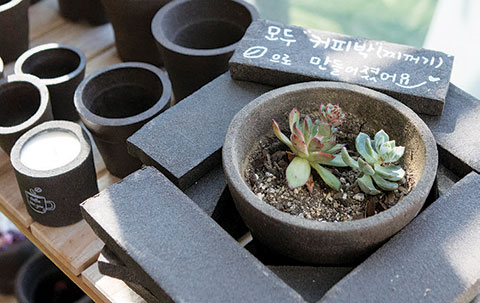-
 2022. November VOL. 656
2022. November VOL. 656
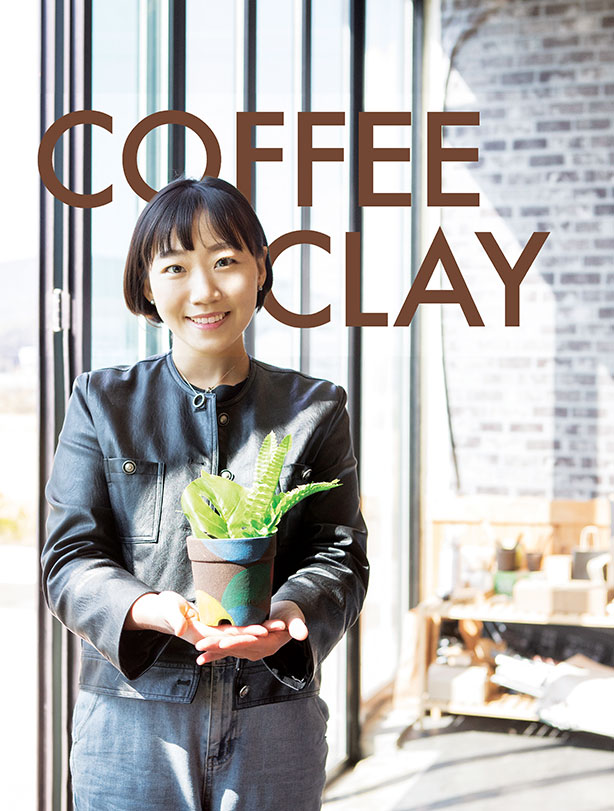
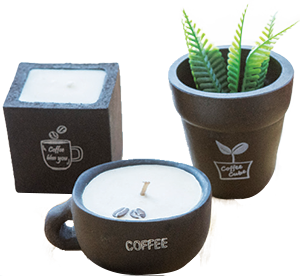
As a growing number of people drink coffee each year, the amount of coffee grounds also increases. Around 15g of coffee beans is used on average to make a cup of coffee. But we get to consume only 0.3g of it. The remaining 14.7g is wasted as coffee grounds. Coffee grounds are either burned or buried as waste. According to the Ministry of Environment, approximately 150,000tons of coffee grounds were generated in 2019. The social cost associated with coffee grounds is quite high. If all the coffee grounds that are produced each year are just thrown away and none of them is recycled, it incurs not only an enormous cost but greenhouse gases including carbon dioxide when they are incinerated.
In fact, coffee grounds are an organic resource of relatively high recycling value, but it is mostly discarded as trash because people do not know how to recycle it. As a result, Coffee Clay upcycles coffee grounds into a recycled natural resource. Capitalizing on its patented technology of mixing coffee grounds and plant extracts to make 100% environment-friendly clay. The parent company Coffee Cube, which is committed to promoting the environment-friendly consumption of coffee grounds also makes pencils, flower pots and bricks out of clay.
Coffee Clay, a subsidiary of Coffee Cube is a platform that connects coffee ground generators and those who use coffee grounds to make products so that coffee grounds can be recycled into a natural resource.
‘How can I recycle coffee grounds in an environment-friendly way?’
Go Yumi CEO thought for a while before she finally decided to buy the machine from Coffee Cube, and went about making pencils and other items out of clay, merging with Coffee Cube in 2020. Initially, she worked as a general manager at Coffee Cube and went on to be the CEO of Coffee Clay.
“Made of Coffee Cube’s patented clay, Coffee Clay’s biodegradable products turn into soil if kept buried for about a month. Under the mission, Make products that are harmless to the soil and biodegradable’, Coffee Clay sticks to the way of production that is harmless to the Earth and soil.”
If visitors bring your coffee grounds to the Coffee Ground Exchange run by Coffee Clay, they can get clay in return. Through this, Coffee Clay strives to create a ‘virtuous cycle of coffee grounds’ by collecting coffee grounds from coffee shops and companies, self-sufficiency centers, and vocational training centers so that people with special needs can create items made from recycled coffee grounds, which the coffee shops and companies buy back.
“Instead of just throwing away coffee grounds, corporations are held responsible for their waste. As a result, we are expanding our partnerships with corporations that are implementing ESG management.”
Coffee Clay works with about 70 partner companies and organizations nationwide. They form partnerships with local cafes and collect coffee grounds. Youths with developmental disorders in Jungnang-gu, Seoul visit coffee shops in the area, carrying a cooler bag to collect coffee grounds as part of their social skills improvement training. Coffee Clay formed a contract with coffee shops in 5 districts in Incheon-si to collect the coffee grounds, which are recycled into natural resources at the Incheon Yeonsu Local Self-Sufficiency Center.
The company is currently working with Hyundai Steel Co., Ltd. on a coffee ground recycling project.
“Unfortunately, only 1% of coffee grounds is recycled, so Coffee Clay is sharing its technology with self-sufficiency centers nationwide, social enterprises, and startups in order to promote the recycling of coffee grounds. It is also creating sustainable jobs, contributing back to society as well.”
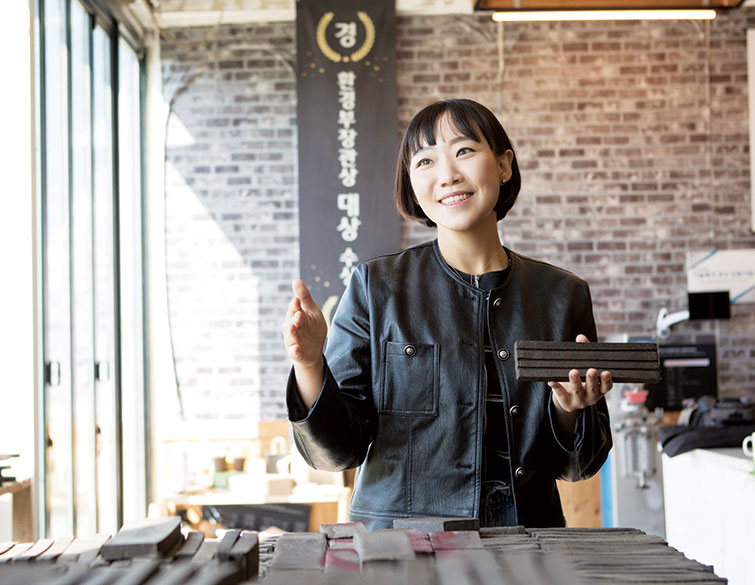
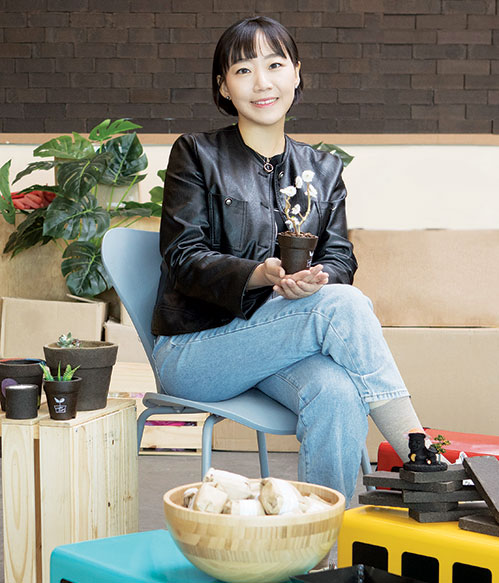

Go Yumi CEO says the best way to recycle the largest amount of coffee grounds is to make ‘blocks of bricks’. Coffee clay from a coffee train is put into an oil-hydraulic press to shape it into bricks which are dried for 14 days until turning solidly hard. These bricks are then exported to overseas, such as Japan. They were used for the interior decoration of a coffee shop franchise.
In addition, Coffee Clay uses the patent on ‘solidification of food waste, such as coffee grounds’ to work with Jeju Provincial Government on making clay out of tangerine peel powder, with the clay being currently on sale. Coffee Clay is also working to make clay out of Korean melon peels, green tea waste, crab shells and clam shells, and it continues to look for ways to make use of recycled coffee grounds.
“I think it is our job to make sure coffee grounds can return to nature in a more clean and natural way. I hope more people get interested in coffee grounds as a potential natural resource and join us in changing them into a new resource instead of treating them merely as waste.”
※ This interview was conducted in accordance with the COVID-19 safety rules.
